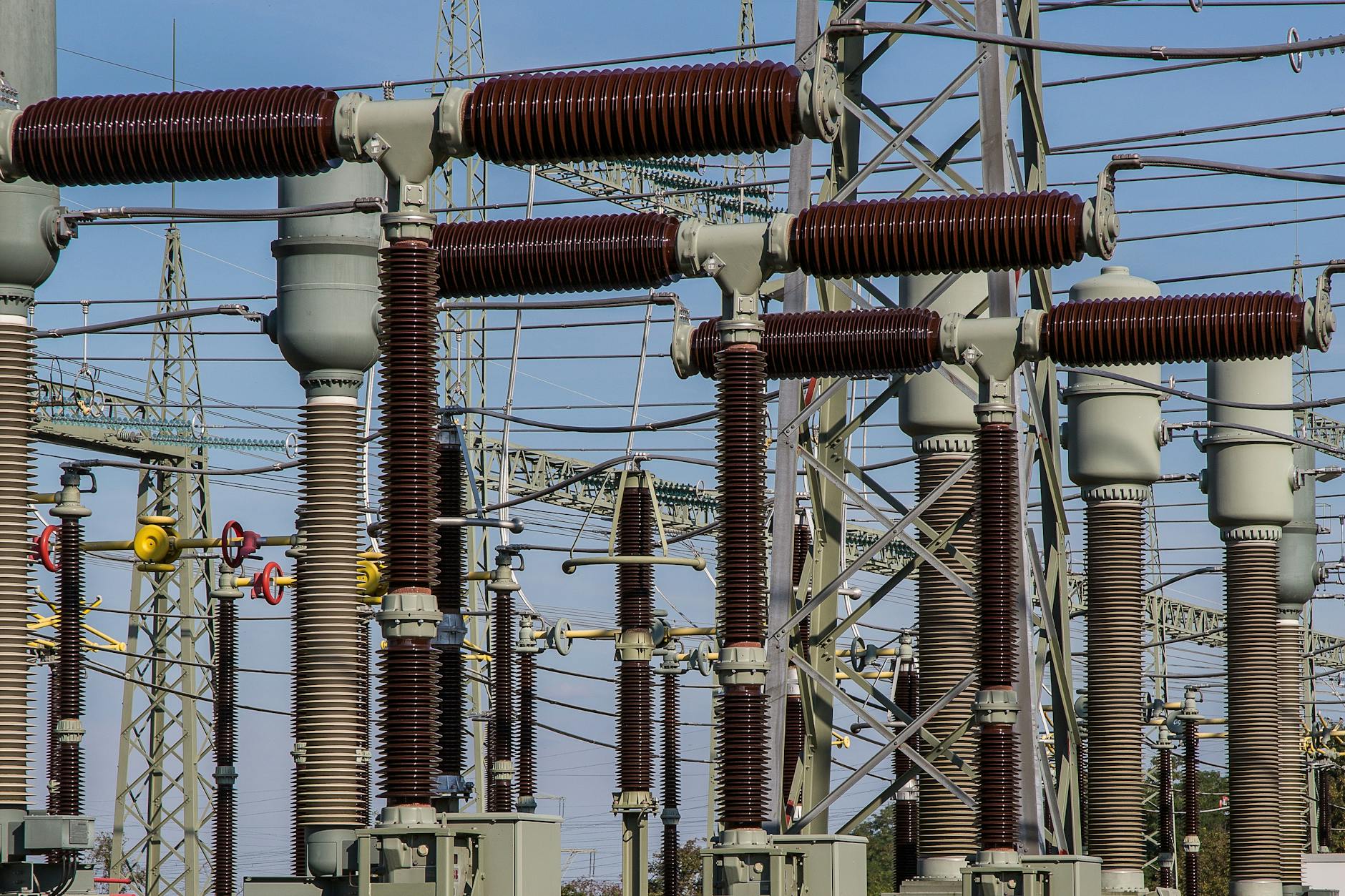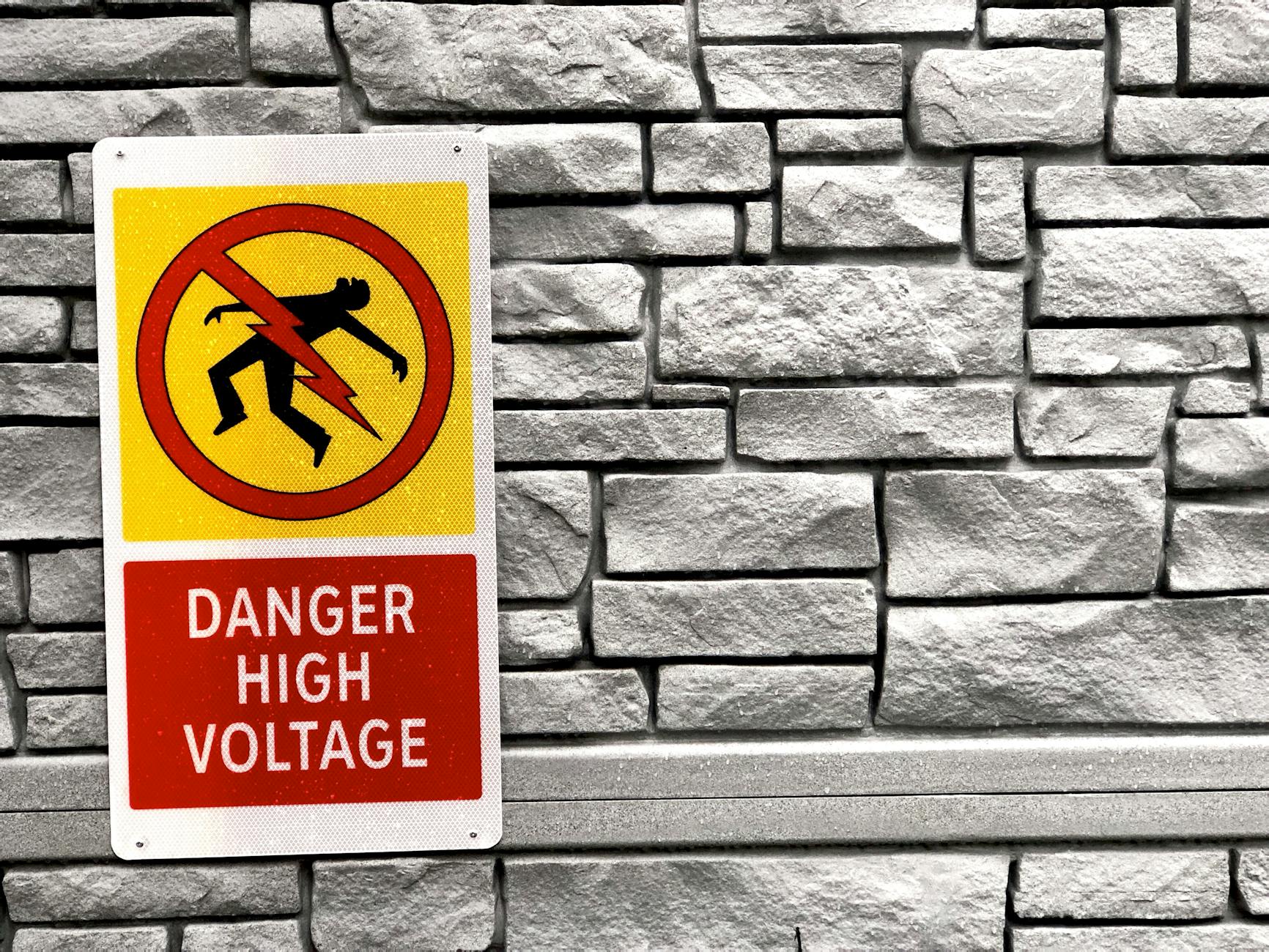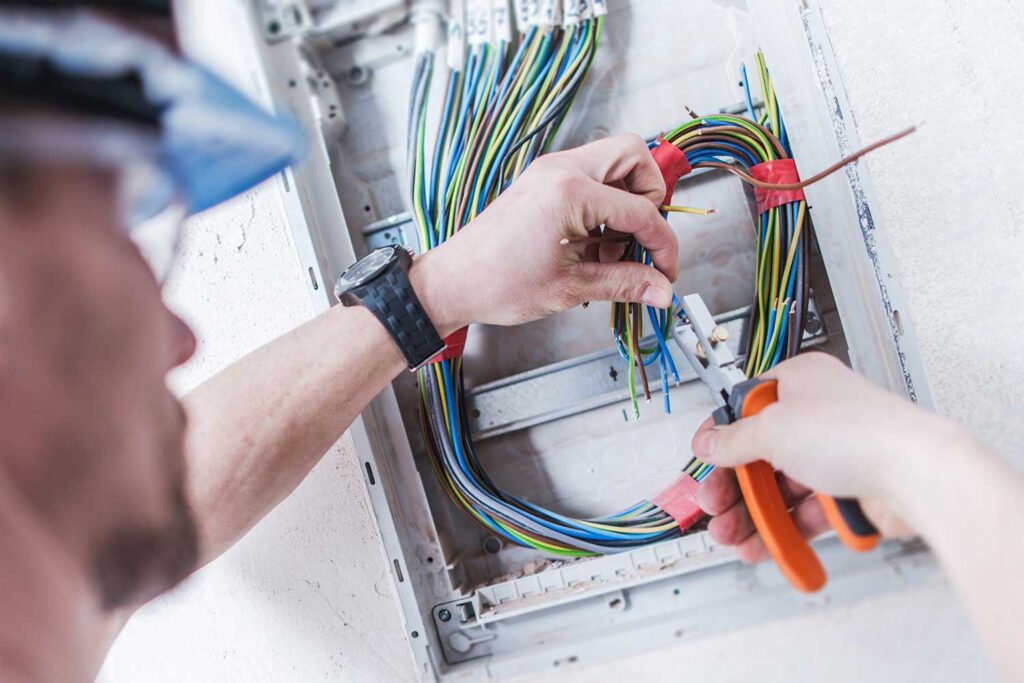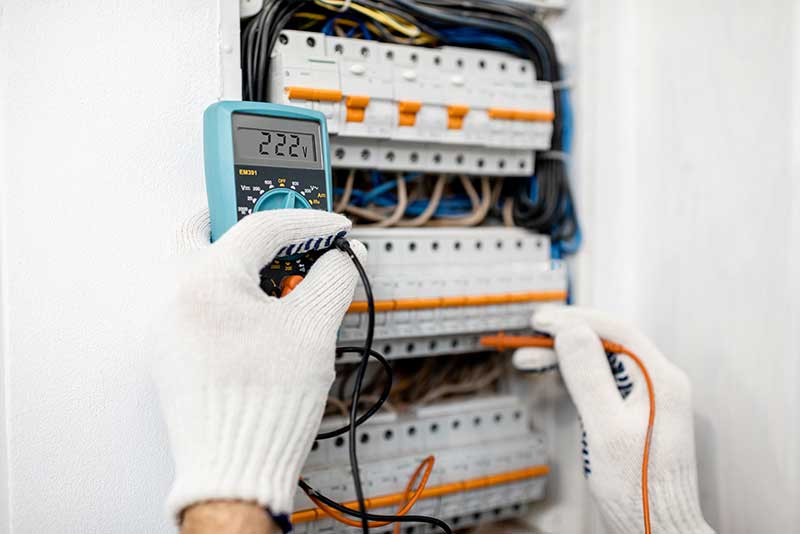Electrical hazards may seem minor at first, but ignoring them can lead to serious accidents, injuries, or even fires. A flickering light, a tripped circuit breaker, or a warm outlet might not feel urgent, but they often point to underlying issues. Recognizing these warning signs early can save lives, protect property, and prevent costly repairs. Whether you’re at home or work, staying alert to these risks is the first step to maintaining a safe environment.
Common Warning Signs of Electrical Hazards
When it comes to electrical hazards, the warning signs are often subtle but critical. Ignoring these red flags can lead to severe consequences, including fires, injuries, or damage to appliances. By understanding these signals, you can act quickly to protect your home, workplace, and loved ones. Let’s review some of the most common indicators of potential Electrical Hazards.
Flickering or Dimming Lights
Has the lighting in your home or office started to flicker or dim without reason? This can occur due to issues with the wiring or an overloaded circuit. Sometimes, it’s as simple as a loose connection, but it can also signify a more dangerous overload in your electrical system. Overloaded circuits draw more current than they are designed to handle, potentially causing overheating and increasing the risk of electrical fires.
If you notice flickering lights while using multiple heavy-duty appliances simultaneously, this indicates your circuit is insufficiently equipped for the demand. Addressing flickering lights quickly can ensure your wiring stays safe and stable. Remember, lights are meant to illuminate consistently—anything less is a red flag deserving attention.
Hot Outlets or Burning Smells
Heat or a burning smell around outlets or switches is a clear danger sign. When electrical wiring or connections heat up excessively, it signals an overloaded circuit, aging wires, or loose connections. This sometimes leaves visible scorch marks near the outlet or emits a faint (and concerning) burning odor.
Never ignore these signs. Overheating wires can lead to a fire, especially if the issue persists without intervention. If you feel heat on the surface of outlets or switches, unplug your devices immediately and contact an electrician.

Frequent Tripping Circuit Breakers
Circuit breakers are designed to protect your home from excessive electrical currents, cutting off power entirely when the load becomes unsafe. However, if your circuit breakers trip often, it’s not just an inconvenience—it’s a sign of something more significant.
Repeated breaker trips are usually due to either overwhelming a circuit with too many devices or a hidden short circuit. While it’s tempting to simply reset breakers when they trip, this won’t solve the underlying issue. Breakers that trip consistently may need professional attention to evaluate whether a short or weak circuit is causing it.
Frayed or Damaged Wiring
Exposed or frayed electrical wires pose a serious threat. Whether caused by wear and tear, rodents, or improper installation, damaged wiring increases the risk of both fires and electrical shocks. Exposed wires transfer electricity less efficiently and can short-circuit when exposed to moisture or other conductive materials.
If you spot visible damage to cords or wires, it’s no small matter. Avoid contact with frayed wires, and don’t delay seeking help from a licensed professional to replace and stabilize the affected sections.
Unusual Buzzing or Humming Noises
Electrical systems are generally silent when functioning correctly. If you hear buzzing, sizzling, or humming sounds near outlets, light fixtures, or electrical appliances, something isn’t right. These noises often occur because of loose connections, faulty outlets, or worn wiring.
Think of these sounds as your home’s way of “talking” to you. Similar to how creaking floorboards signify instability, buzzing electrical components indicate potential danger and require immediate attention.
By staying vigilant and understanding the warning signs outlined above, you can reduce your risk of encountering electrical hazards. Quick action whenever you detect these indicators can save you from substantial damage or injury.
Common Electrical Hazards and Their Implications
Recognizing common electrical hazards is vital for protecting your home, workplace, and loved ones. Often, these hazards go unnoticed until they lead to significant damage or accidents. Understanding the risks involved not only prevents harm but also ensures that issues are addressed before turning into costly or life-threatening situations. Here are some of the most common electrical hazards and the dangers associated with them.
Overloaded Circuits about Electrical Hazards
An overloaded circuit occurs when too many devices demand more electricity than a circuit can handle. This additional load causes overheating, which can lead to melted wires and increase the risk of electrical fires.
This hazard often manifests when people plug multiple high-energy devices into the same outlet or power strip. For example, plugging in a space heater, hairdryer, and microwave on the same circuit can spell trouble. Aside from the fire hazard, overheating can also damage sensitive electronics, cutting their lifespan short or rendering them completely inoperable.
To prevent this, always check the amperage rating of circuits and avoid plugging in too many devices at once.
Outdated or Inadequate Wiring
Older buildings with outdated wiring systems often cannot handle the energy demands of modern technology. Wires that were sufficient decades ago may now struggle with powering energy-intensive appliances like HVAC systems or electric cars.
Outdated or inadequate wiring also increases the risk of short circuits, spark hazards, and fires. Homes built before the 1980s may even have aluminum wiring, which is more flammable than modern copper wiring. Today’s devices require wiring that meets current electrical code standards to ensure safe operation.
If your home frequently trips breakers or you notice discoloration around outlet plates, these could be signs that the wiring is overdue for an upgrade.

Improper Grounding or Bonding
Grounding provides a path for electrical current to safely disperse into the earth, minimizing risks associated with electrical fault conditions. When grounding is improperly installed or missing altogether, the risks of electrical shock and equipment damage increase significantly.
Imagine plugging a faulty appliance into an ungrounded outlet—the current has nowhere to safely travel in the event of a malfunction, which could cause a severe electric shock. Bonding is equally essential, ensuring that all metal parts able to conduct electricity are linked, preventing uneven electrical flows that could harm devices or people.
Regularly check outlets and wiring to ensure they’re properly grounded. Modern homes typically feature ground-fault circuit interrupters (GFCIs) to provide added safety, especially in areas prone to moisture.
Using Incorrect Wattage Bulbs
It’s an easy mistake to make: grabbing a bulb with wattage higher than a fixture’s recommended limit. However, this seemingly minor error can have serious repercussions. Using a bulb with a higher wattage than the fixture can handle creates excessive heat, possibly leading to melted fixtures, damaged wiring, or even fire.
For example, if a lamp is marked for a maximum 60-watt bulb but a 100-watt bulb is used instead, the extra heat can warp the lamp’s materials and compromise its safety. Always double-check the wattage specified on your fixture and match it accordingly to prevent potential hazards.
Electrical Equipment in Wet Conditions
Water and electricity are an extremely dangerous combination. When electrical equipment is exposed to damp or wet conditions, the risk of electrocution skyrockets. This is because water is an excellent conductor, allowing electrical currents to travel quickly—right into anyone who comes into contact with the device.
Common scenarios include outdoor outlets exposed to rain or using appliances near sinks or bathtubs. Even damp hands while unplugging a device can be hazardous. To mitigate these risks, use waterproof fixtures and ground-fault circuit interrupter (GFCI) protection in wet areas. Additionally, be cautious about drying wet tools or outlets before using them.
Understanding these hazards plays a significant role in maintaining a safe environment. Eliminating or addressing risks like overloaded circuits, old wiring, or improper grounding can significantly minimize accidents and property damage. Electrical issues should never be left to chance—being proactive is the key to staying safe.
Preventative Measures to Avoid Electrical Hazards
Proactively taking steps to avoid electrical hazards can safeguard your home, workplace, and family. Simple measures carried out regularly can prevent injuries, property damage, and even life-threatening situations. By staying on top of inspections, using modern safety equipment, and following good practices, you can reduce the risks significantly and ensure your environment is safe for everyone.
Inspect Electrical Components Regularly
Routine inspections of outlets, wiring, and extension cords should be on everyone’s to-do list. Frayed wires, cracked insulation, or loose connections are some of the most common culprits behind electrical accidents. Take a moment to look for signs like discoloration, faulty plugs, or exposed wiring.
Here are a few key items to check during inspections:
- Outlets: Ensure there’s no scorch marks, unusual heat, or buzzing noises.
- Wiring: Look out for visible wear, rodent damage, or fraying.
- Extension Cords: Avoid using cords that look brittle, damaged, or repaired with duct tape.
Spending 10 minutes on a quick inspection each month can go a long way in identifying problems before they escalate.

Use of Safety Equipment
Investing in the right safety gear can be a lifesaver—literally. Ground Fault Circuit Interrupters (GFCIs), surge protectors, and proper insulation are not optional; they’re essential for modern-day electrical safety.
- GFCI Outlets: These are especially important in bathrooms, kitchens, and outdoor areas where water and electricity might meet. They cut power instantly when they detect abnormalities.
- Surge Protectors: Avoid damage to electronics during power surges by using dedicated protectors, not just old-fashioned extension strips.
- Proper Insulation: Check that wires and outlets have adequate insulation to prevent exposure and accidental contact.
When setting up electrical systems, always choose quality over savings—reliable safety equipment is an investment in your well-being.
Avoid Dangerous Practices about Electrical Hazards
Small, seemingly harmless habits can lead to big risks. From improperly childproofed outlets to daisy-chaining power strips, neglecting basic safety rules can end in disaster. Here are some tips to protect yourself and others:
- Childproof Outlets: Use outlet caps or tamper-resistant outlets if you have kids. They’re easy to install and prevent accidental shocks.
- Avoid Daisy-Chaining: Plugging multiple power strips together can overload circuits and cause overheating or fire.
- Stay Clear of Power Lines: Avoid handling ladders, tools, or equipment near overhead power lines, especially during outdoor projects.
Think of unsafe practices as minor cracks in a dam—they might seem okay, but over time, they could lead to catastrophic failure.
Replace Damaged Equipment
It can be tempting to hang onto a toaster with half-melted cords or a lamp with a flickering bulb. But damaged equipment is more than just an annoyance—it’s a hazard waiting to happen. Faulty appliances can spark fires, trip breakers, or deliver dangerous shocks.
Always replace:
- Appliances with frayed cords or damaged plugs.
- Power tools that smell like burning plastic or show signs of overheating.
- Extension cords with visible damage.
Holding onto defective gear might save a few bucks now, but the potential consequences aren’t worth it.
Professional Electrical Inspections
Sometimes, you need an expert to spot what your eyes might miss. Periodic inspections by licensed electricians can uncover hidden issues, such as outdated wiring or poor grounding, especially in older homes.
Here’s when to schedule a professional check:
- Every 3-5 Years: Especially for older buildings.
- After Major Renovations: Ensure new additions comply with code.
- If You Notice Persistent Problems: Flickering lights, tripped breakers, or hot outlets.
A professional inspection isn’t just an added expense—it’s peace of mind knowing your electrical system is safe and up to code.
Regular maintenance and conscientious habits create a strong safety foundation. By combining routine inspections, proper equipment, and professional oversight, you can avoid electrical hazards and keep your home or workplace secure.
Role of Professional Electricians in Hazard Prevention
Electrical hazards are not something to gamble with, as they can quickly escalate from minor inconveniences to serious threats. While some issues may seem manageable with DIY solutions, there are limits to what a homeowner or business owner can safely and effectively address. Professional electricians are key players in hazard prevention, ensuring the security of your space through expert knowledge, proper tools, and adherence to safety codes. Let’s break down why their role is crucial.
Signs You Need a Professional
Some electrical issues demand immediate attention from a licensed electrician. Ignoring these signs or attempting to fix them yourself can lead to dangerous outcomes:
- Persistent Circuit Breaker Trips: Breakers are built to shut off when circuits are overloaded or compromised. If yours keeps tripping, it could indicate deeper problems like short circuits or outdated panel capacity that require professional evaluation.
- Electric Shocks: Feeling a shock when plugging in or touching an appliance is more than a slight inconvenience. It often points to improper grounding, wiring issues, or faulty devices—a situation best left to the experts.
- Flickering Lights or Power Loss: Frequent dimming or flickering could be a sign of loose wiring, overloaded circuits, or malfunctioning electrical components. A professional can trace the source and secure the system.
- Burning Smells or Scorch Marks: If you notice overheating outlets or an acrid electrical smell, shut off power and contact an electrician immediately. These warning signs signal fire risks that require urgent attention.
- Buzzing Noises: Unusual sounds from outlets or switches might mean loose connections or wiring problems—both of which can lead to overheating and fires.
If you experience any of these issues, don’t hesitate. Licensed electricians have the training and equipment to handle these dangers safely.

Benefits of Hiring an Expert
When it comes to electrical work, there’s no substitute for professional experience. Hiring a licensed electrician offers peace of mind and several key benefits:
- Safety Compliance: Electricians are trained to follow strict codes and regulations, ensuring that installations meet local and national safety standards. This prevents fire hazards, electrical shocks, and other risks caused by improper workmanship.
- Accurate Repairs: A professional guarantees precise fixes. They can diagnose and address the root cause of an issue rather than applying temporary or incomplete solutions.
- Efficiency Upgrades: Need to modernize your system? Electricians provide energy-efficient recommendations, such as upgrading old wiring or installing surge protectors, so you save on long-term energy costs.
- Avoid Costly Mistakes: An improperly done electrical job can lead to repeated breakdowns or system failures, which cost far more than hiring a professional upfront. Electricians also often offer warranties for added assurance.
- Specialized Tools for Complex Tasks: Professionals have access to advanced tools and equipment that ensure jobs are completed safely and effectively the first time.
Whether you’re installing new systems, upgrading outdated setups, or troubleshooting issues, leaving electrical work to a certified professional pays off in safety, compliance, and long-term savings.
Recommended Frequency for Inspections
Regular inspections by a skilled electrician are vital for catching hidden issues before they become hazards. But how often should these be scheduled? It varies based on factors like the age of the building and the complexity of its electrical system:
- Older Homes (20+ Years): Schedule inspections every 3–5 years to ensure outdated wiring or components stay within current safety codes.
- After Renovations: Remodeling efforts often require electrical updates. Always confirm with a professional that new installations are code-compliant.
- Newly Purchased Properties: Don’t assume the previous owner kept everything safe. Schedule an inspection to identify any gaps or hidden hazards before moving in.
- Frequent Issues: If tripping breakers, flickering lights, or shocks occur consistently, inspections should be immediate and thorough.
- Commercial Spaces: For businesses, annual or bi-annual inspections are recommended due to the higher volume of electrical use and potential liabilities.
Proactive inspections can catch problems early, keeping both minor inconveniences and major hazards at bay. They not only enhance safety but also prevent surprise costs down the road.
Professional electricians act as a safety net against the often-hidden dangers of electrical systems. Their expertise can mean the difference between a safe environment and a potentially life-threatening one. If you’re uncertain about the condition of your electrical system, don’t hesitate to contact a licensed expert—it’s always better to be safe than sorry.
What to Do in an Electrical Emergency
Electrical emergencies are situations no one wants to face, but being prepared and knowing how to act can make all the difference. Whether it’s an electric shock, a fire, or a downed power line, moments of crisis demand quick and decisive actions to minimize injury and property damage. Here’s how to handle these situations step by step.
Turn Off Power Immediately
When faced with an electrical issue, cutting off the power is the first and most critical step. This action reduces the risk of electric shocks, fires, or further damage.
- Electric Shocks: If someone is in contact with an electrical source, do not touch them directly. Instead, turn off the power at the main breaker to stop the current. If you can’t reach the breaker safely, use a non-conductive object (like wood or plastic) to separate them from the source.
- Electrical Fires or Sparks: Shutting off power minimizes the risk of escalation. Locate your home’s circuit breaker and flip the main switch to “off.” This can help stop the fire or prevent further Electrical Hazards.
Remember, before attempting anything, ensure your own safety. If the situation appears too dangerous, skip to evacuating and calling emergency services.
Seek Professional Help
Electricity is unpredictable, and attempting to manage emergencies without the right knowledge or tools can lead to severe consequences. Always contact professionals in critical situations.
- Call 911 for Immediate Assistance: If someone is injured or a fire has started, make emergency services your first call. Paramedics and firefighters are trained to handle these crises.
- Engage an Electrician for Follow-Up: After the situation is stable, call a licensed electrician to assess and repair the damage. They’ll ensure your system is safe to use again and help prevent repeat issues.
Never try to DIY major electrical fixes in emergencies. Experts can diagnose problems properly to protect you and your property from long-term risks.
Electrical Hazards First Aid Basics
In situations involving electric shocks, quick first aid can make a significant difference while waiting for responders. However, safety is key—you must ensure the power source is off before stepping in.
Here are the basic steps to assist someone who has received an electric shock:
- Check for Danger: Ensure the area is safe and the current is off. Never put yourself at risk.
- Call Emergency Services: Dial 911 or your local emergency number immediately.
- Assess the Victim’s Condition:
- If unconscious, check for breathing and pulse.
- Begin CPR if you’re trained and there’s no sign of breathing.
- Treat Burns if Present: Cover them with a sterile, non-adhesive bandage. Do not apply creams, oils, or ice.
- Stay with the Person Until Help Arrives: Offer reassurance and monitor their condition.
Quick thinking and calm actions can prevent lingering injuries during these precious moments.

Evacuate During Fires
Electrical fires are unpredictable and spread quickly. Your priority is to get everyone to safety and reduce the risk of injury.
Follow these steps if you encounter an electrical fire:
- Evacuate the Area: Alert everyone in the building and exit immediately. Don’t stop to retrieve belongings.
- Avoid Using Water: Water conducts electricity, making the fire—and the danger to you—even worse. Instead, use a Class C fire extinguisher if safe to do so.
- Call 911: Once outside, contact emergency services to report the fire and wait for professionals to arrive.
Ensure your family or coworkers know these evacuation procedures. A well-rehearsed plan saves time and lives when every second matters.
Knowing how to respond in an electrical emergency puts you one step closer to safety. Whether it’s cutting the power, seeking help, administering first aid, or evacuating during a fire, taking these actions cautiously and confidently can ensure the best possible outcome.
Conclusion
Spotting and addressing electrical hazards early can prevent devastating accidents and hefty repair bills. By staying aware of warning signs, like flickering lights or warm outlets, and adopting regular safety practices, you can protect your home and loved ones.
Simple steps, like inspecting wiring or using GFCIs in damp areas, make a significant difference. When in doubt, always consult a professional electrician—they’re equipped to handle risks you can’t see.
Electrical safety isn’t just a precaution; it’s peace of mind. What measures can you put in place today to ensure your home or workplace stays hazard-free?




